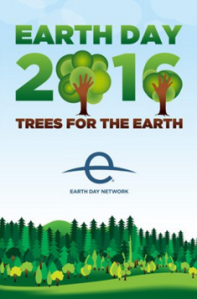“Live in the sunshine, swim the sea, drink the wild air.” -Ralph Waldo Emerson
Ralph Waldo Emerson, a famous U.S. American poet, wrote this reflecting on nature and it seeks to capture what this week stands for. This week, April 18-22, is Earth Week, an international campaign to promote environmentalism. It’s a week culminating to Friday, called Earth Day that also raises awareness to how humans are exploiting the planet and its resources.

The provocative video shown below outlines major statistics about the natural resources being depleted by humans. It’s a call to actions. We must do something because lives are being lost, both animals and humans. This week is sponsored and encourage, in large part, by the non-profit Earth Day Network that serves a main digital medium actor for this movement, according to Leonarda Garcia-Jimenez et. al. The article titled “The Construction of Symbolic Power:Comparing Offline and Online Media Representationsof Occupy the Street in Spain” discusses and defines symbolic power as they relate to social movements and allows us to identify who the major actors, actions, and themes are in the environmental social movement. .
The symbolic power of this specific event within the larger environmentalism social movement is that it has moved beyond the digital sphere. Earth Day and Earth Week are not simply existing behind a screen. They are promoting action and activism, organizing rallies, encouraging people to plant trees etc. For many in developed countries, the knowledge about Earth Day/Week begins on the screen but it’s goal is to move beyond the screen and formulate into protests, sit-ins, and actions.
Earth Day 2016 centers around trees—planting 7.8 billion of them to be precise. People can participate in this event by planting a tree themselves, donating, or organizing or attending an event that promotes environmentalism. This advocacy from the screen to organized events and action demonstrates the symbolic power this social movement embodies, and particularly this organization.
This day and week focusing on the earth and environmentalism is an example of how this larger social movement is seeking to move beyond the screen and into both the public realm and into political arenas.
Clay Shirky, in an article published in the UK magazine Prospect, argues that there are advantages to using the Internet in social movement revolutions and activism; that the internet can be a starting place for protests and social gatherings around a particular issue. Earth Day clearly demonstrates this idea in that it allows for people to learn about and opt into activism. The protests are then more influential with the social media dynamic. The YouTube video below demonstrates how social media is asking people to get involved in small ways, utilizing symbolic power to build ethos and credibility.
The digital divide operating in this social movement has to do with access. Who has access to Earth Day events? Who has access and means to organize an Earth Day event? It’s an international campaign, but what groups of people are reading about it and participating? Is it more about those with access, privilege, and money donating or trying to save developing countries and those areas that have little to no access and money?
These questions becomes imperative as we consider how digital spaces have consequences and divides between non-digital spaces and publics.




Recent Comments